Photographed by Paige Green
Tucked in by the entrance of the artisan barn at this year’s California Nut Festival is a booth that seems perfectly at home with its setting. The light from the open door is catching bundles of dry flax and the barn floor is slowly acquiring little mountains of woody fiber as people demonstrate turning flax into linen. This is Chico Flax’s second year tabling at the festival. Running the booth are two of the main forces behind the project: Sandy Fisher and her husband Durl Van Alstyne. Working alongside them are a college student, a teacher, and members from the Mt. Lassen Fiber Guild. This assortment of people hints at what quickly becomes more apparent: in choosing the name of a place, The Chico Flax Project is pointing to more than the location of their farm — they’re highlighting the numerous community members interwoven with the vision to make a Chico-based cloth. As Sandy describes it, the project has swept up all kinds of people including those “who just want to get their hands in the dirt.”

Hardworking hands in the dirt are exactly what growing flax and processing it into linen takes. The cycle starts with broadcasting the seeds, followed by a 90–100 day growing period. At harvest, the plants are pulled from the root. Harvest is followed by retting, a process where the flax is submerged in water for 3 days or left out for dew to collect on it for two weeks (called dew retting). Due to the mold that collects on the plants during dew retting, this process produces a darker fiber.
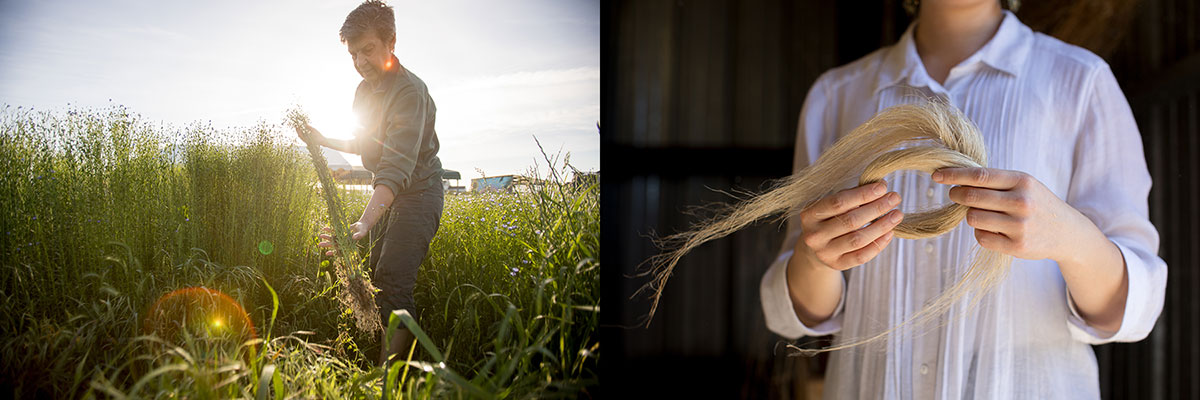
Once the flax is dry it goes through braking, scutching, and hackling to release the fiber and prep it for spinning. When the fiber is ready for spinning, the shorter fibers (tow) are removed and the longer fibers (line) are then tied into bundles, called stricks, which resemble locks of hair. From there the stricks can be spun from a distaff on a spinning wheel using water and light tension.
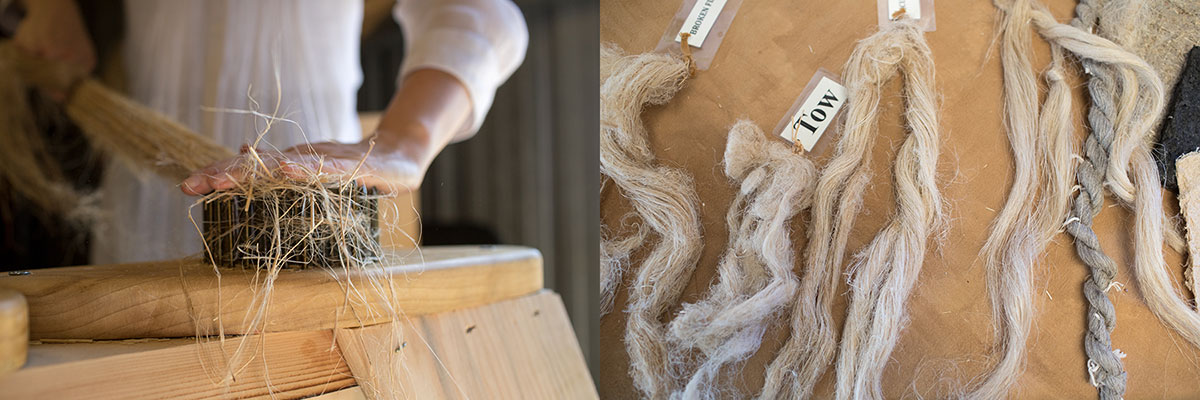
To start growing flax in Northern California was essentially forging a new path in the region’s fibershed. For Chico Flax, wheels were set in motion by a phone call Sandy received in the wake of the tragic Dhaka factory fire in Bangladesh. An activist from the Chico Peace and Justice Center wanted to source her clothing locally and was interested in what weavers like Sandy were making. With summer weather setting in, the two women started talking through options and an idea was struck to try linen. Months and meetings later, seeds were bought and a plot was secured through Grub CSA Farm. Using The Big Book of Flax as a guide, they planted and harvested their first crop in 2012.
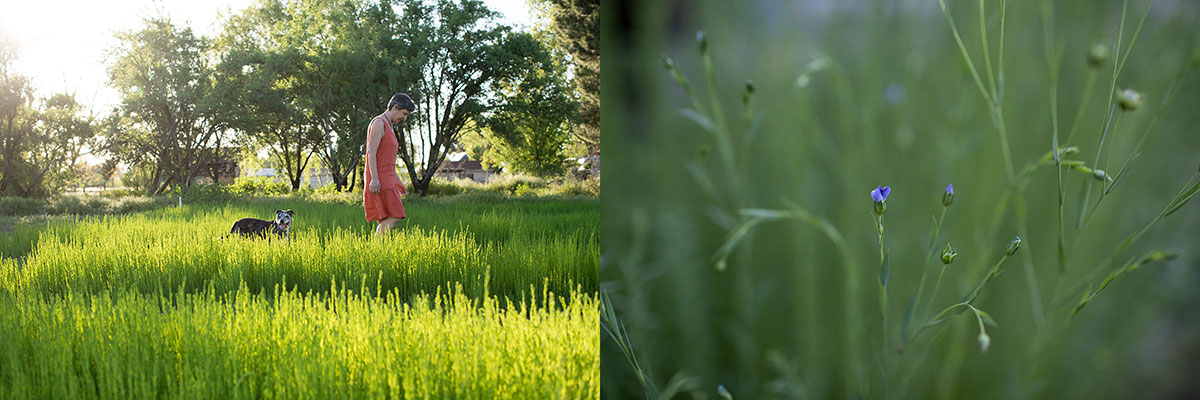
That phone call began The Chico Flax Project, yet marked a middle point in Sandy’s history with textiles. Sitting at her kitchen table, backed by a loom and a view of her backyard dye garden, Sandy shares how her interest in weaving began with textile classes at Chico State University. Following graduation, she decided to pursue studying under a master weaver in Europe. Since it was pre-Internet, she contacted the British consulate and wrote letters looking to be placed with a weaver. In 1980, she went to Turriff, Scotland to study with production weaver David Russell Gurney. Upon returning, Sandy started weaving fabrics under “The Flying Shuttle” (now “Sandy Fisher Woven”). After essentially cold-calling Vogue Patterns, she found a niche by doing production weaving for designers. From there, her business grew through joining Cottage Artisans and exhibiting at American Craft Council shows. Following a shift in craft business and some life changes, Sandy decided to move away from production weaving. She now works on more traditional looms. “I’ve fallen in love with Swedish weaving and fine weaving. I wanted to go back to my roots. I felt like a machine with the other looms, so now I feel more in touch.” Here, when she was starting to reconnect with her roots and the movement of the loom, was when the call came to make a Chico cloth.

Like her pursuit of weaving, Sandy aims bigger than the moment—forging a path with unassuming determination. That initial interest in flax as a local fiber has now blossomed into a desire to see America embrace flax as a fiber crop. With that, Fibershed has become an invaluable partner. When Sandy talks about joining as a Producer member, she emphasizes that she no longer felt alone. Here was a whole network of like-minded people with an assortment of tools to share. Since becoming a part of Fibershed, she’s presented at the Wool Symposium and contributed custom woven cloth to the 2017 Fibershed Gala.
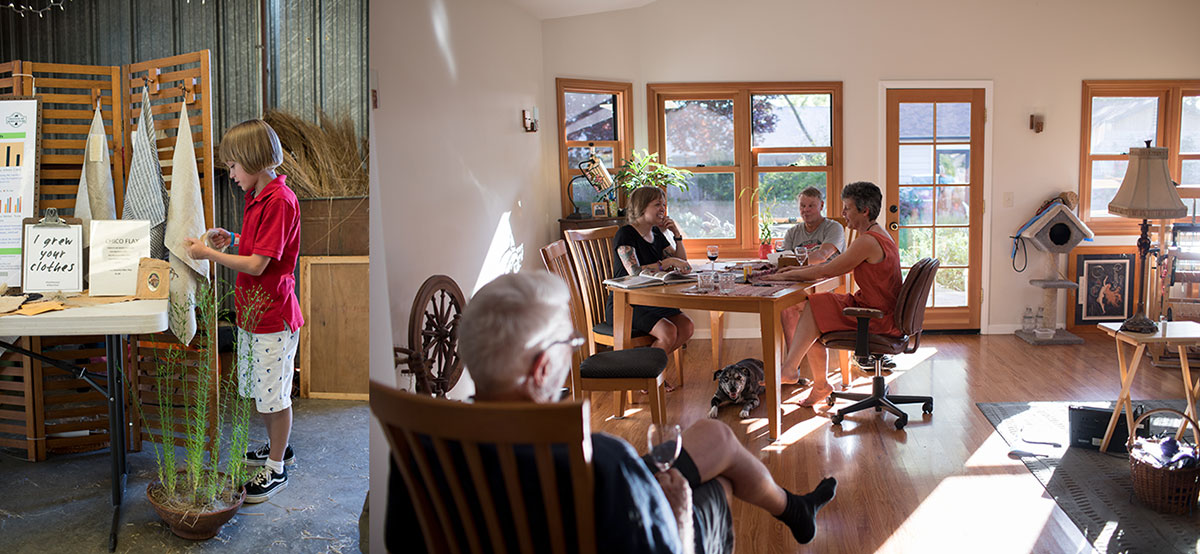
The conversation around the table pauses as the front door opens and Sandy and Durl’s neighbor, Curt DeBerg, joins in. Curt has lived in Chico for over 25 years and teaches in the business department at Chico State University. His connections run deep and the tone of his voice reveals a ready passion for Chico Flax. As one of the project investors, he has helped Sandy and Durl forge an LLC, giving some teeth to the project’s business structure. His belief in service learning has also brought university business students into the fold, both in the fields and online (they helped launch an Indiegogo campaign). This connection with the university has grown beyond just Curt’s department. Professors and students in agriculture and engineering are now involved with helping to problem-solve striping caused by a chemical remnant from the farm’s past as an orchard, and mechanizing flax processing.
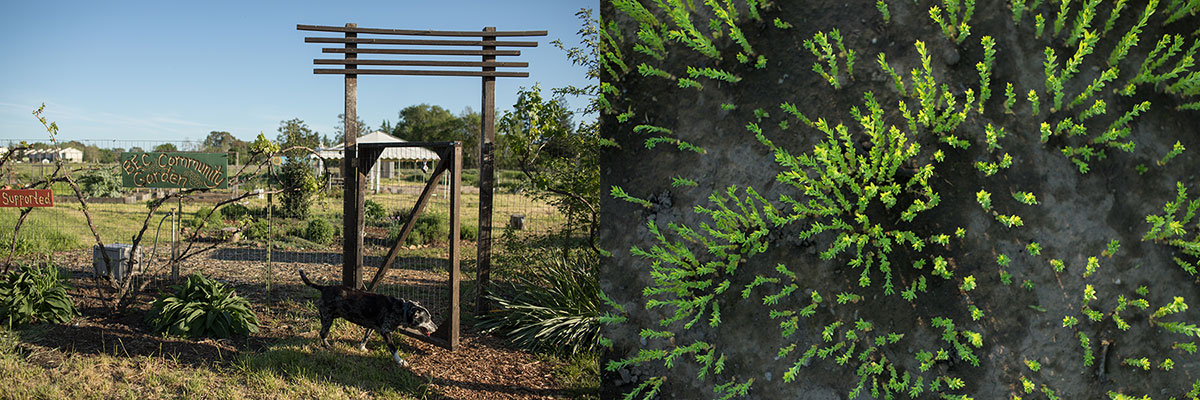
Between Sandy, Durl, and Curt, their love for the community is evident in how they talk about the neighborhood and the history of this town. That commitment is imprinted on them and their approach to business. The act of weaving extends beyond cloth as Sandy and Durl, with Chico Flax, are connecting multiple sects of the Chico community, from Chico State University and Butte College to cyclists, gardeners, artisans, bakers, and activists. Chico Flax is born out of this place. As Sandy says, “It’s allowing this to happen because of Chico.”
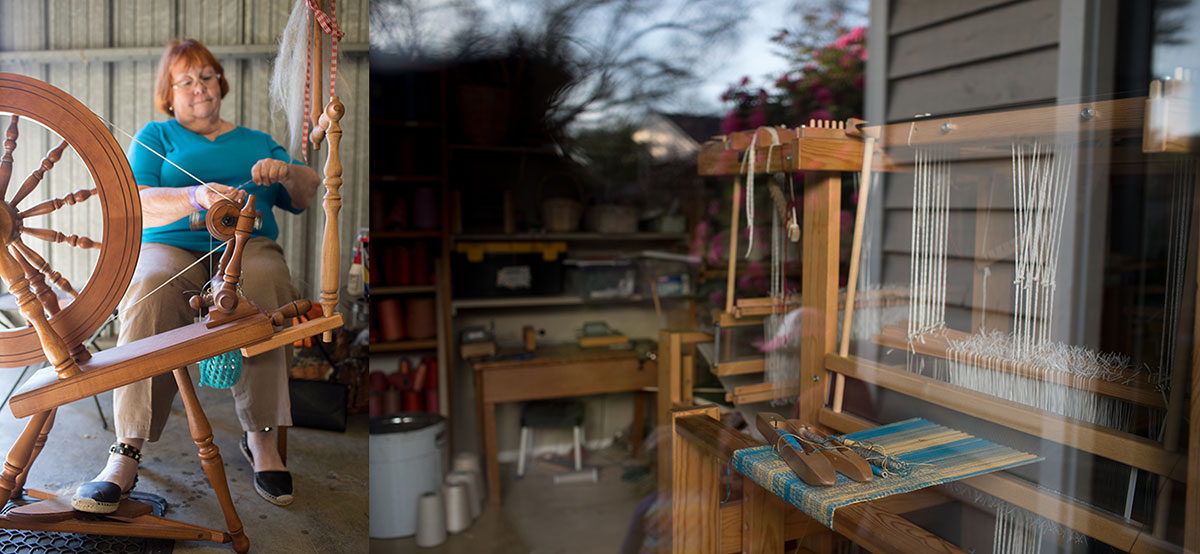
With shadows getting long, we leave the house to see the flax crop that will be harvested in a few weeks. Currently the project’s crops are spread between two spaces: a few plots at the Butte Environmental Council (BEC) Community Garden and a four-acre farm that was previously an orchard. At BEC Community Garden, the plants raise to meet us almost at the waist. The height is surprising especially as the rest of the community garden’s crops are just getting a spring start. This early growth is the product of flax being a winter crop for Northern California. As Sandy has learned, flax takes seven years to adapt to an environment, so they are close to having a variety that has become acclimated to Chico. At the garden, the flax is densely packed into three beds, each containing a different variety of seed, all coming from the Netherlands. Adjacent to those is another bed with stouter plants. This flax is grown for the seed that once harvested, will be passed onto local baker Dave Miller of Miller’s Bake House.
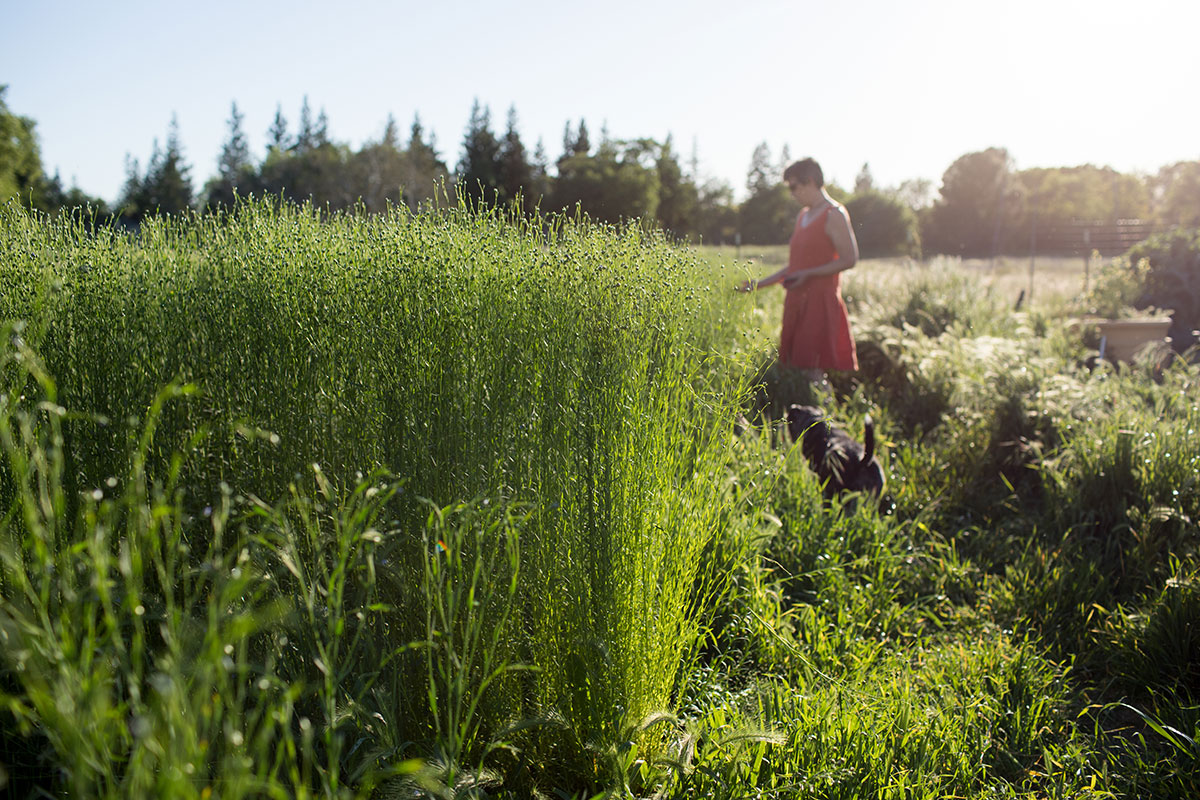
In contrast with the BEC Community garden, the Chico Flax farm is a space committed to becoming a flax field. In the middle of the four acres sits a barn that will eventually house processing equipment. These future plans are paired with a recent grant from the California Department of Food and Agriculture’s Healthy Soils Initiative, which will go towards a cover crop as well as a hedgerow along the property that will incorporate native plants.

May 2019 is slated for their “coming out party” as Sandy, Durl, and Curt have started to call the future harvest party. It will be the first full harvest at the four-acre farm and as Durl describes their ideas for food, music and celebration he adds that it’s important to “make the transition more meaningful.” The day will mark coming yet another step closer to creating an accessible, locally-grown and harvested, community-invested fiber. That Chico cloth request that started Sandy down this path years ago will no longer be just an idea, it will be on the horizon.
To follow along with the progress and keep an eye on future events, visit chicoflax.com and connect with Chico Flax on Facebook and @chicoflaxtolinen on Instagram.





